S L Arora Solutions for Chapter: Electromagnetic Induction, Exercise 4: HOTS Problem on Higher Order Thinking Skills
S L Arora Physics Solutions for Exercise - S L Arora Solutions for Chapter: Electromagnetic Induction, Exercise 4: HOTS Problem on Higher Order Thinking Skills
Attempt the free practice questions on Chapter 6: Electromagnetic Induction, Exercise 4: HOTS Problem on Higher Order Thinking Skills with hints and solutions to strengthen your understanding. New Simplified Physics (Vol 1) For Class 12 solutions are prepared by Experienced Embibe Experts.
Questions from S L Arora Solutions for Chapter: Electromagnetic Induction, Exercise 4: HOTS Problem on Higher Order Thinking Skills with Hints & Solutions
A square metal wire loop of side and resistance is moved with a constant velocity in a uniform magnetic field of induction as shown in Fig. 6.94. The magnetic lines are perpendicular to the plane of the loop (directed into the paper). The loop is connected to a network of resistors each of value . The resistances of the loop wires and are negligible. What should be the speed of the loop so as to have a steady current of in the loop? Give the direction of the current in the loop?
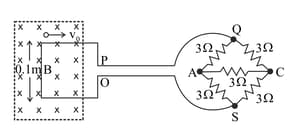
Refer to Fig. 6.95. The arm of the rectangular conductor is moved from to the right side. The uniform magnetic field is perpendicular to the plane and extends from to and is zero for . Only the arm possesses substantial resistance . Consider the situation when the arm is pulled outwards from to and is then moved back to with constant speed . Obtain expressions for the flux, the induced emf, the force necessary to pull the arm and the power dissipated as Joule heat. Sketch the variation of these quantities with time.
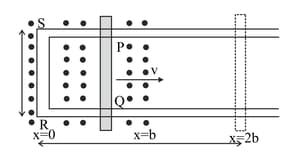
In Fig. 6.97, a square loop has 100 turns, an area of and a resistance of . The perpendicular magnetic field has a magnitude of . If the loop is slowly and uniformly pulled out of the field in , find the work done.
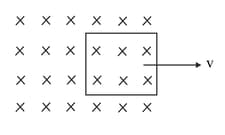
A conducting rod slides freely on two parallel rails, and , with a uniform velocity ''. A galvanometer '' is connected, as shown in Fig. 6.98 and the closed circuit has a total resistance ''. A uniform magnetic field, perpendicular to the plane defined by the rails and and the rod (which are mutually perpendicular), is present over the region, as shown.
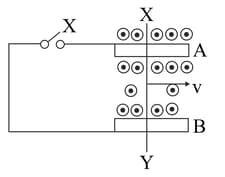
With key open find the nature of charges developed at the ends of the rod .
A conducting rod slides freely on two parallel rails, and , with a uniform velocity ''. A galvanometer '' is connected, as shown in Fig. 6.98 and the closed circuit has a total resistance ''. A uniform magnetic field, perpendicular to the plane defined by the rails and and the rod (which are mutually perpendicular), is present over the region, as shown.
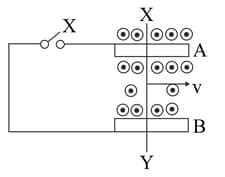
With key open, Why do the electrons, in the rod , (finally) experience no net force even though the magnetic force is acting on them due to the motion of the rod?
A conducting rod slides freely on two parallel rails, and , with a uniform velocity ''. A galvanometer '' is connected, as shown in Fig. 6.98 and the closed circuit has a total resistance ''. A uniform magnetic field, perpendicular to the plane defined by the rails and and the rod (which are mutually perpendicular), is present over the region, as shown.
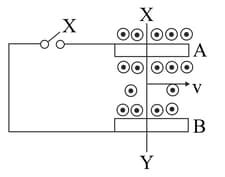
How much power needs to be delivered, (by an external agency), to keep the rod moving at its uniform speed when key is closed?
A conducting rod slides freely on two parallel rails, and , with a uniform velocity ''. A galvanometer '' is connected, as shown in Fig. 6.98 and the closed circuit has a total resistance ''. A uniform magnetic field, perpendicular to the plane defined by the rails and and the rod (which are mutually perpendicular), is present over the region, as shown.
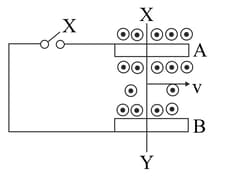
How much power needs to be delivered, (by an external agency), to keep the rod moving at its uniform speed when key is open?
A conducting rod slides freely on two parallel rails, and , with a uniform velocity ''. A galvanometer '' is connected, as shown in Fig. 6.98 and the closed circuit has a total resistance ''. A uniform magnetic field, perpendicular to the plane defined by the rails and and the rod (which are mutually perpendicular), is present over the region, as shown.
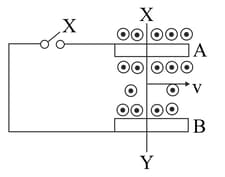
With key closed, how much power gets dissipated as heat in the circuit? State the source of this power.
